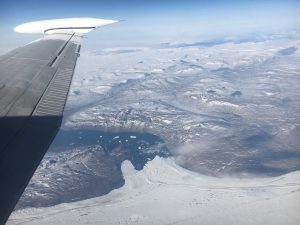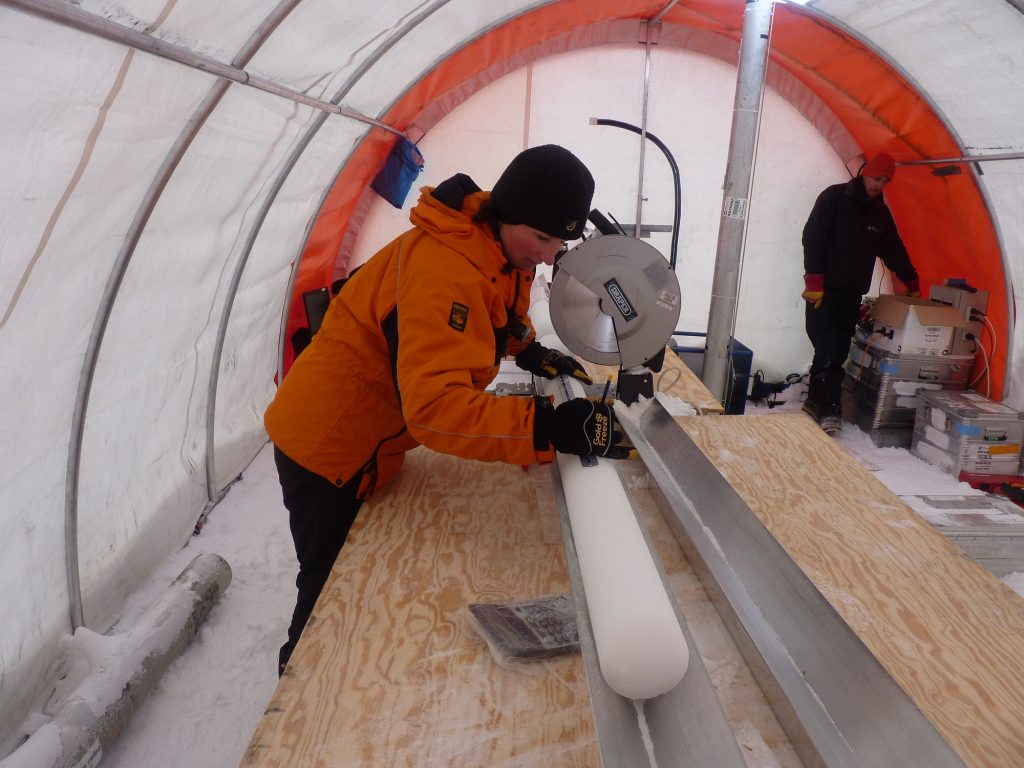‘This ice was melting 4 months before it ever had melted and it was terrifying. That, for me, was the beginning of saying ‘this is happening!’ Robert SwanIn celebration of Earth Day, Global GoalsCast will release the second episode of the Green Miniseries. In this episode, join veteran explorer, Robert Swan on the bottom of the earth where we find him not elated, but heartbroken. He’s just discovered his boat has sunk, leaving him $1.2 million in debt and reneging on his promise to look after Antarctica. Robert’s exploration of the South Pole takes place the same year the hole in the ozone is discovered above the continent and the human impact on the stratosphere is beginning to be understood. Global GoalsCast hosts explore the current ozone layer repair efforts and are joined by British Antarctic Survey’s Jon Shanklin – part of the team who discovered the hole in the Ozone layer – and Nathan Kurtz – of NASA’s IceBridge project documenting the glacial retreat – to dig into the realities that fueled Robert’s crusade. Travel with us to discover the surprising friendship, born of Robert’s obsession with Captain Scott, that restores his grit and determination to erase his debt, make good on his commitment to the southern continent, and become the first man to walk to both the North and the South Poles. Then, meet Barney, Robert’s son, and hear how climate action strengthens their relationship as they create a personal mission to protect the planet, together.
Featured guests
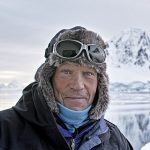
Robert Swan is the first person to have walked to both the North and South Poles. His leadership and determination made his 900 mile journey to the South Pole, the longest unassisted march in history. He was awarded the Polar Medal by Her Majesty, Queen Elizabeth II and is a United Nations Goodwill Ambassador for Youth.
Robert is a polar explorer, a leader in energy innovation and founder of the 2041 Foundation. This story of unbelievable spirit will take you on a journey of inspiration, courage and humility. Robert committed to his dream at the age of 11, achieved it with a team after 22 years and is now, on a 50 year mission to help preserve Antarctica.
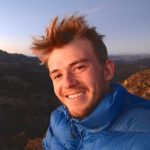
Barney Swan was born in London, United Kingdom, and then moved to tropical Far North Queensland, Australia at the age of 7. Being raised off grid in Australia helped him developed an acute understanding of how valuable energy is, with conveniences often not being an option. With degrees in Business and Multimedia, Barney now lives and works in California, co-directing 2041’s expeditions and ventures. Over the last 5 years, he has applied and trained skills in outdoor leadership, team management, & project strategy.
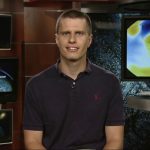
Nathan Kurtz received the B.S. degree in Physics from Iowa State University in 2004, and the M.S. and Ph.D. degrees in Atmospheric Physics from the University of Maryland Baltimore County (UMBC) in 2007 and 2009, respectively. He joined the Cryospheric Sciences Branch in the Hydrospheric and Biospheric Sciences Laboratory, NASA Goddard Space Flight Center in 2013. His research interests are in remote sensing of the polar regions with an emphasis on the use radar and laser altimetry data. He is currently the IceBridge Project Scientist and is the principle investigator responsible for the production of the IceBridge community sea ice data products.
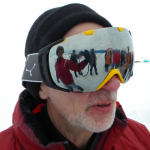
Born in Wrexham, and educated at King’s School, Chester, Jonathan Shanklin has worked for the British Antarctic Survey since 1977 after graduating from Cambridge University. In the early 1980s he was instrumental in the discovery of the Antarctic Ozone Hole with Joe Farman and Brian Gardiner. He has made 20 visits to the Antarctic and received the Polar Medal in 2006. Other interests include amateur astronomy, where he is an expert on comets, and botany, where he is county recorder for Cambridgeshire.
Additional Resources
-
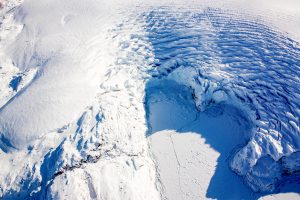
- Operation IceBridge, NASA’s longest running survey of the state of polar ice, shattered records in 2017.
-
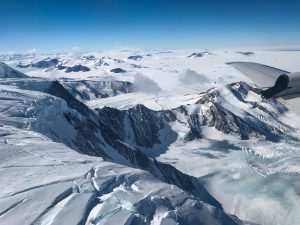
- NASA’s Operation IceBridge flew over the Antarctic’s Larsen C ice shelf in this image from October 31, 2017.
-
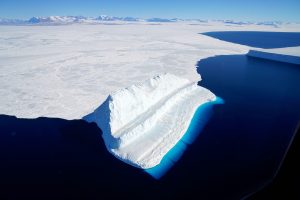
- Acquired on November 29 by Operation IceBridge during a flight to Victoria Land, this image shows an iceberg floating in Antarctica’s McMurdo Sound.
Click to view: The first comprehensive study of snowfall across Antarctica provides vital information in the study of future sea-level rise.
Photo: Dr Liz Thomas, lead author, measuring ice cores in the field. The study analysed 79 ice cores collected from across Antarctica revealing a 10% increase in snowfall over the last 200 years.
Transcript
Speaker 1: 00:06 So we’re a hundred clicks out from the pole and I thought, yes, we’ve done it. I won’t have to do this again. And we’re nearly there and then the ice started to break up, we hear the ocean groaning, a dark still menace, it cracks and shifts the ice beneath our feet. This ice was melting four months before it ever had melted and it was terrifying. That for me was the beginning of saying this is happening.
Claudia RE: 00:44 Welcome to the Global GoalsCast,
Edie Lush: 00:46 The podcast that explores if we can change the world.
Claudia RE: 00:50 This episode is a second in our green mini series that we’re airing from water day to earthday to ocean day.
Edie Lush: 00:58 The whole series is about polar explorers, Robert and Barney, Swan, father and son.
Claudia RE: 01:04 Wait a second, I thought that was my line.
Edie Lush: 01:05 I know. And I stole it from you.
Edie Lush: 01:09 So today we’re focusing on earth day. I’d like to ask you, Claudia, where on the earth are you
Claudia RE: 01:14 Where on earth I am exactly. Well, I just landed to Hong Kong where I am recording in a studio with a sound engineer called Montine. And I just landed from Chengdu where I was visiting the pandas that now remind me of the fragility of our earth. There’s only 2,200 pandas left in the world out of 30,000 a couple of years ago. A good reminder that we have to take care of our planet on earth day.
Edie Lush: 01:46 As we mentioned in episode one, we feature Rob and Barney Swan, not just because their story stories like watching a movie also because what they talk about links us to so many of the issues that we deal with for Earth Day and that we talk about in general on the global goals cast.
Claudia RE: 02:01 This time around, we’re going to hear about how NASA measured the changes in the ice caps
Edie Lush: 02:07 and we’re going to hear from Jonathan Shanklin, the man who discovered the hole in the ozone.
Claudia RE: 02:12 And we’re going to get to know Barney. Barney, is Robert’s son, but before we do that, we have to get Robert off the south pole where we left him last time
Edie Lush: 02:25 When we were finishing the last episode, Rob had arrived at the South Pole and moments later found out that his ship had sunk.
Claudia RE: 02:33 He should have been reveling in the tremendous achievement, 90 days of trekking across the ice, snow and some of the most dangerous terrain on earth to get to the South Pole, but instead Edie. Robert stood there thinking about how he was going to get everyone home. The fact that he was now $1.2 million in debt and still with a base to clean up back in Cape Evans
Robert Swan: 02:59 900 miles away. John Elder, a crew member on the Southern Quest, played the last post on his trumpet watching as the Southern Quest sank
Robert Swan: 03:14 I didn’t know what to do. All I knew was that I’d lost a ship, and I had 25 people standing on an iceberg. I had three people at the South Pole. It all looked like somebody forgot to have buried us, and I’d made commitments to leave Antarctica as clean and tidy as possible.
Edie Lush: 03:37 Contrary to the promises he’d made to famous explorers like Jacques Cousteau, Rob wasn’t leaving Antarctica clean and tidy. With no ship, he had no idea how to get the hut, the radio tower, oil drums, and everything else back to the UK. The US government by the way, offered to bulldoze everything into the ocean and help extract the crew. But for Rob and the rest of the team, that was completely out of the question.
Claudia RE: 04:02 It was expedition member Gareth Wood that provided the solution after nine months wintering over and 70 days walking to the South Pole, Gareth offered to winter over again acting as a caretaker.
Edie Lush: 04:19 Rob admits that he knew there was a possibility he might get back to the UK and conveniently forget about the mess, but by leaving the crew members there, he would have to come back.
Edie Lush: 04:34 Rob has incredible timing. He was there at the same time the South Pole hit the news.
News Report 1: 04:41 Recently scientists discovered a weak spot in the ozone layer over Antartica
News Report 2: 04:45 Time-lapse satellite pictures have confirmed the annual appearance of the massive hole chlorofluorocarbons known as CFCs are causing the problem.
News Report 3: 04:52 This really marks the first time human beings on one side of the planet have done something to the planet that has significantly affected it globally.
Edie Lush: 05:01 I remember that time so well. I actually went to Australia that year and the hole in the ozone layer was very big news in the southern hemisphere. Do you remember?
Claudia RE: 05:10 It was huge news in Mexico too. The ozone layer has been monitored at British Antarctic survey research stations for over 50 years and we spoke to Jon Shanklin who was involved in that shocking discovery in 1985
Jon Shanklin: 05:27 The ozone layer occurs high in atmosphere above us. What it does is it blocks the shortest wave lengths of ultraviolet light from coming through to the surface and it’s those wavelengths that can do damage to micro organisms and the like. It does allow some longer wave lengths through and those are the wavelengths that can give us sunburn and if we get too much of them then we get cataracts in our eyes or skin cancer. And obviously when there’s less ozone, there’s more of those wavelengths and that increases the risk of damage to people. One of my first jobs when I joined the Antarctic survey, was to process, I was on observations that had been made in the Antarctic and had all been written down on paper. And as we’ve worked back through the backlog, it became a little bit suspicious that we were seeing quite low ozone levels. And eventually I worked back through all the missing data and was able to show that it was a systematic decrease in the amount of ozone above our Halley station.
Claudia RE: 06:41 John, along with two other scientists, Joe Farman and Brian Gardiner, had made one of the biggest scientific discoveries of the 20th century.
Jon Shanklin: 06:52 The initial reaction I think was one of shock really in the space of little over a decade. We went from it being barely detectable to over half the ozone layer disappearing. And as a consequence of this very rapid change, I think that focused the minds of the politicians. Today, every single member of the UN has signed up to the Montreal Protocol and that treaty really is working. We can see the amount of chlorofluorocarbons and other ozone destroying substances in atmosphere going down. And we can also see the beginnings of a recovery in the Antarctic. If we kept going with the business as usual scenario, there would be two consequences. One for the ozone layer and we would probably by the middle of this century effectively have an ozone hole covering the entire planet and the other is in terms of climate change, the CFCs are very active greenhouse gases and they contribute to global warming.
Edie Lush: 08:04 Back to Rob now.
Robert Swan: 08:06 I had to go and rescue those people. I had huge debts, 1.2 million US dollars in personal debt. It was just a nightmare. I realized that if we did not pull something round, we would just be seen as a failure. I don’t like that word very much. It’s never been part of my vocabulary.
Edie Lush: 08:29 Nine months after completing the South Pole trek, he turned to Giles Kershaw, one of the most accomplished pilots in Antarctic aviation who came up with a James Bond style mission.
Claudia RE: 08:40 Sounds like something Robert would get right into.
Edie Lush: 08:43 Right? I know.
Claudia RE: 08:45 Kershaw had been the one who rescued Robert’s Cessna airplane by taking off from an ice flow shortly before the Southern Quest sank. He now hatched a plan to fly a twin order airplane the 4,000 miles needed to get in and out of Antartica. They would fly from Punta Arenas in Chile to the Antarctic peninsula across the barrier to Cape Evans.
Edie Lush: 09:13 I feel like I’m becoming an expert of planes of Antarctica.
Claudia RE: 09:18 But the plane would need refueling and that came with help from the Chilean government who placed 120 barrels of aviation fuel in a small hut mid-continent
Edie Lush: 09:31 So Rob admits this was another totally crazy plan, sitting on the runway and Chile carrying hundreds of gallons of fuel. Giles at the control and Rob almost passing out from literally breathing aviation fuel fumes facing yet more risk failure and even death.
Claudia RE: 09:52 During the flight, Rob got a sense of the magnitude of Antartica. He actually said that if he had seen it by air before the expedition, maybe he would have never had the heart to attack it by foot.
Edie Lush: 10:08 14 hours after leaving Chile, they landed on the sea ice. Next to the base, they dismantled the hut, refueled the plane, and then with Gareth, Steve and Tim safely onboard flew the 14 hours back to Chile, pausing for another refuel on the way.
Claudia RE: 10:25 The mission was crazy, but it worked and Rob got his team back home, but that was only half of the promise fulfilled.
Edie Lush: 10:35 Now Rob turned to his friends at Greenpeace who cleaned up the kit from the base and in their words, polished the stones at Cape Evans. After the footsteps of Scott Expedition, rob floundered. He wasn’t sure what to do with his life. He was in debt and he admits he was drinking too much. Guess who he turned to for advice? The actor that played his hero, Scott.
Claudia RE: 10:59 Oh yeah, yeah, yes, yes. The fledging friendship with Sir John Mills. His pen-pal from the South Pole. Check out what happened?
Robert Swan: 11:07 And I said, Johnny, look, I owe 1.2 million. And he said, well Robert, there’s only one way out. I will teach you how to speak in public. So he started me with this horrible mirror routine where you have to look yourself in the mirror and speak about anything for a minute, hold your own eyes and not hate your voice and not hate yourself. And one day you find yourself talking about peeling an orange or something completely pointless and you’d realize that you connected with yourself and you didn’t dislike yourself as much anymore. And he gave me lots of other tips and it was down to him that without being arrogant, I have become one of the top public speakers in the world. Thanks to Johnny Mills.
Edie Lush: 11:58 Always humble, our Robert.
Claudia RE: 12:01 Edie, you train people how to speak in public. Do you use mirrors and peeling oranges?
Edie Lush: 12:06 I don’t know what the orange is about, but I use the second generation of the mirror and it’s called an iPad.
Claudia RE: 12:12 Ha. Rob went on to tour the world talking about his adventures when he started, he just wanted to pay off that $1.2 million debt. But as time went on, he started to notice a pattern in the questions coming from the audience.
Robert Swan: 12:30 We’re talking 32 years ago. So words like environment, climate change, global warming, it didn’t exist and as I went around starting to learn how to speak with John Mills’ help. I began to realize that people were listening and saying, well, what about this hole in the ozone layer, Rob.
Edie Lush: 12:56 If he had the spark to protect the environment in Antarctica, it was now a small flame that led to Rob’s next adventure. Supported by the UN environment department, he started to plan “Icewalk, an expedition to the North Pole”. This trip aimed to increase international awareness and action about what was happening to the poles.
Robert Swan: 13:17 So the North Pole was eight of us from seven nations and we had 22 young people from 15 different nations at the base camps starting to make educational programs about this issue for young people.
Recorded Clip: 13:37 4:30 Monday afternoon, March the 20th the day of departure,
Robert Swan: 13:42 I feel that numbness descending again like a blanket as it did when I walked away from Scott’s hut and headed for the South Pole. It’s like a recurring nightmare once again, that awful fear of failure once again, that desolate expanse of ice ahead of me. Once again, that terrible, terrible cold. The moment of departure, it was the most lonely moment of my life.
Edie Lush: 14:11 More pain, more fear of failure that he faced during the footsteps of Scott. I do wonder, why does he put himself through this?
Robert Swan: 14:20 Robert is now inspired by more than just personal adventure and ambition. Unlike the South Pole walk. There is a bigger force pushing Robert to do this now.
Edie Lush: 14:31 And as he nears the North Pole Rob encounters an environmental change that cements his purpose.
Robert Swan: 14:36 So we’re a hundred clicks out from the pole and I thought, yes, we’ve done it. I won’t have to do this again and we’re nearly there. And then the ice started to break up round us when we were 642 miles away from land. We hear the ocean groaning at dark, still menace, cracks and shifts the ice beneath our feet. This ice was melting four months before ever had melted so we couldn’t plan it and it was terrifying. I think probably the most frightening moments of my life because the noise of the ice cap melting is screaming. It’s just a dreadful noise all around us.
Claudia RE: 15:30 One night floating on an ice floe in his tent, the sound of screaming ice echoing around him. Rob seriously contemplated if the expedition to the North Pole could carry on, and if they would even make it back alive.
Edie Lush: 15:49 Of course it wouldn’t be Rob if he didn’t make promises to protect the planet when he thinks he’s going to die. He does speak compellingly about our planet’s deteriorating health and he always keeps his promise.
Robert Swan: 16:01 That for me was the beginning of saying, this is happening. And it reinforced in me that sense that we were in a survival situation and that we should be doing our very best about that.
Claudia RE: 16:22 Remember that while Antartica is ice on top of a landmass, the Arctic is just ice with ocean underneath, so they were going to have to work miles around the breaks, into the ice called leads to get to the North Pole.
Robert Swan: 16:40 Monday, April the 10 another desperate day, we encountered a large open lead of water and had to travel 24 hours to find the crossing point that dangerously thin bridge of moving slushy ice.
Robert Swan: 17:04 There was a mile of freezing ocean below us. We had to be careful. Everyone was feeling the strain. The weather is warming too quickly. These open leads of water may soon prove to be our biggest obstacle.
Edie Lush: 17:17 But they continued on. Sometimes they had to stumble on their hands and knees across ice ridges in order to avoid the leads that were a mile deep at 3:30 in the morning, local time on the 14th of May, 1989 by the way, that’s my 19th birthday. The expedition made it to the North Pole and they proudly raised the flag of the United Nations.
Robert Swan: 17:43 Well we’ve done it then!
Unknown: 17:45 Yep.
Claudia RE: 17:49 There have been many studies looking at the length of time the Arctic’s been melting versus the time the ice grows and Edie, we know that over decades there is a clear trend that the length of the season that ice grows is getting shorter and shorter.
Edie Lush: 18:08 And I spoke to NASA about this. Are you impressed with that?
Claudia RE: 18:11 Yeah. Yeah. I’m very, very impressed. I introduced you to them.
Edie Lush: 18:14 Okay. I forgot about that part. Okay. The NASA Ice Bridge Project, as you know, Claudia is measuring climate change in both the northern and the southern hemisphere. Nathan Kurtz has such a cool job. He flies over Greenland and Antarctica measuring the thickness of the sea ice with some instruments called gravimeters and laser autometers. He started out using radar to see if there were oceans underneath the ice on Europa, one of Jupiter’s moons, and now he looks at the oceans under the Earth’s ice.
Claudia RE: 18:45 Operation Ice Bridge is part of a story that grabbed the world’s attention last November,
Nathan Kurtz: 18:54 The Larsen sea ice shelf carved a massive iceberg, it’s about the size of Delaware, and so we were able to fly over it and get the first glimpses from close up. This thing had just broken off in this floating ice island is going to be heading out and all of this ice has now contributed to the raising of sea level.
Edie Lush: 19:16 And those changes are hard to comprehend.
Nathan Kurtz: 19:18 It takes 360 gigatons of ice loss to give a one millimeter sea level rise and so over the period from around 1992 to 2011 one study is shown a ice loss from west Antarctica of 65 gigatons per year and from the Antarctic Peninsula of 20 gigatons per year. Whereas East Antarctica is gaining about 14 gigatons per year. That means that Antarctica is contributing some percentage of the total increase in sea level, so about half of the sea level rise that is observed is due to thermal expansion of the oceans and the other half is from loss of places like Antarctica, Greenland, and various mountain glaciers.
Claudia RE: 20:08 When you do the math, Antarctica is losing ice and that is contributing to sea level rises.
Edie Lush: 20:14 And that sea level rise is impacting us all. We heard from the people in Fiji in the first of this mini series, part of the reason that it’s difficult to talk about is that it isn’t simple science. It literally takes rocket scientists to work out what’s happening. We
Nathan Kurtz: 20:31 We as scientists want to get a handle on all the different processes which are contributing to the ice change and how much ice or water is going out to the ocean. And so the surface melting and where the water goes after it melts on the surface, there’s, I mean it’s essentially a big unknown. How much of the water that melts is, is going out to the ocean. How much stays locked in the ice sheet itself. And then when that happens, how does this contribute to our knowledge of say, the physics of the ice sheet behavior and that allow us to better predict how the ice is going to behave over things like the next century. It’s awe-inspiring to be on the plane and witness these strange places on earth. Just strange and strangely beautiful that do have an impact on us as people. Things like the ice moving out to the ocean has an impact on people.
Claudia RE: 21:31 Have you seen those pictures captured by operation Ice Bridge? They are stunning and they’re on our website and they literally depict what we’re trying to tell. We left Robert raising the blue flag of the United Nations at the North Pole on Edie’s birthday.
Robert Swan: 21:50 The job was done. I became the first person in history. Let’s be honest, stupid enough to walk to both poles. That’s when Jacques Cousteau came in and said, hey, by the way, Rob, here’s a 50 year mission – help save Antarctica.
Edie Lush: 22:05 Rob didn’t know it at the time, but all those turning points in his life, seeing the Scott of Antarctica film, age 11, finding the Scott journals at university, making a pact with the polar gods at the ends of the Earth, meeting John Mills all building towards this moment.
Claudia RE: 22:22 And so began Robert’s mission to save Antarctica. He established the 2041 foundation, which is dedicated to the goal of preserving the last great wilderness on the earth.
Edie Lush: 22:34 Since 1998 Robert has taken nearly 4,000 young people from over a hundred nations to Antarctica. 2041 is about inspiring young people to be better leaders so that when they’re in positions of power in 2041 they make better decisions that will preserve Antarctica and the rest of the planet.
Claudia RE: 22:55 2041 is the year when the Antarctic Treaty comes up for renewal. The fate of the last great wildernesses on the earth will be decided then.
Edie Lush: 23:06 In 1994 Rob became a father to Barney.
Claudia RE: 23:09 And we will hear a lot more from Barney in episode three and four.
Edie Lush: 23:14 Exactly and this deep paternal bond spurred him on even more.
Robert Swan: 23:18 There was the future in front of me and it re-inspired me that all that we were doing was the right way forward because Barney would inherit whatever we left.
Barney Swan: 23:36 You have categories when you refer to storms with nautical things, so you have a 1 to 12, 12 being like a hurricane, code black and 1 being just calm waters and all very easy you know no wind basically. And my father’s always been somewhere between about nine and 12 on the scale. He was constantly on the move when I was a child and I think it was always a little bit abstract, to be honest what he did. Between the planes and the backpack and the various antics and the pursuits and the lectures, I didn’t, I didn’t really ever connect with that.
Claudia RE: 24:23 That was Barney Robert’s son. In his early years, Barney wasn’t aware of his dad’s adventures. Well, that changed when he got older.
Barney Swan: 24:34 It was through those early memories of us traveling around, going on holiday skiing, rock climbing, doing lots of kayaking together, long hikes, lots of camping. That’s where I really started to connect with him and everything that he represented in regards to the outdoors.
Edie Lush: 24:51 Barney spent his early years living off grid with his mom and stepfather in Australia. He described these years as being instrumental in the development of his curiosity to explore and respect nature.
Claudia RE: 25:02 Barney had his first encounter with Antarctica by boat when he was seven. In 2012 Barney went again, and it was this trip that opened his eyes and his heart to the work that his dad had been doing and the part that he himself could lay in its future success.
Barney Swan: 25:22 He opened the door to come down to Antarctica and I walked through it and and realized there was a whole world there for me to explore and that’s where it started.
Edie Lush: 25:30 It’s led to Barney working with his dad on tangible ways to clean up CO2 emissions, working on reforestation projects, algae farms, micro grid systems, and waste management.
Claudia RE: 25:46 Do you remember our friends at NASA’s Operation Ice Bridge? Well, he turns out Robert and Barney also connected with NASA.
Edie Lush: 25:54 And this led to the ultimate in father and son bonding. Here’s Rob talking about it at the top of the Schatzalp in Davos with you and me.
Robert Swan: 26:03 We would really respect NASA. And unfortunately I took Barney, which I shouldn’t have done to a meeting with NASA and they said, Rob, the edges of Antarctica now are disintegrating much faster than even the most pessimistic people thought they might. We’ve all heard of the Larsen B Ice shelf 15 years ago is broke off and the Larsen sea ice shelf broke off very recently. And they said to us, why isn’t anyone taking this seriously Rob? And rather rudely I said, probably cause you’re being a bit boring about it. Well I thought, great. You know, we can do a little talk and, you know, do a few things and Barney turns to me, and he said, dad, it’s time we did something. And I said, yeah, yeah, we’re trying. And he said, no, no, it’s time you walked again to the South Pole. And this time we should undertake our journey only on renewable energy. And I remember sort of shrinking in the car thinking, do I really have to do this again at the age of 61 it’s not something that people should do. And Barney convinced me that together as the millennial generation and the older generation, we need to join together. And this required a huge efforts because we would be pioneering using renewable energy to melt snow and ice into hot water, which has never been done before, especially on the move in the Antarctic.
Claudia RE: 27:38 Throughout Robert’s life he has taken on some crazy expeditions. Now, he committed himself to yet another one. The South Pole Energy Challenge was born.
Edie Lush: 27:51 Rob, Barney and their companions Martin Barnett and Kyle O’Donoghue hatched a plan to walk the 600 miles to the South Pole.
Robert Swan: 27:59 28 years ago, I hung up my skis on the wall from the North and South Pole and left them there and thought I’ll never have to walk to the poles again. Then I thought, what am I best known as, is the person that walked to both poles. But things have stepped up a bit. That in a way Antarctica is sending us an SOS, save ourselves, save our souls. So we are making this journey to try and help people understand that it is not that complicated to change the way that they are using that energy.
Claudia RE: 28:50 Robert is a real campaigner who cares deeply about what’s happening to our world and we will follow the South Pole energy challenge expedition in our next episode.
Edie Lush: 29:08 Before we tell you what’s coming up next time, we’re going to link to what we’ve heard in the story of the Swans to facts and actions linked to Earth Day. Claudia, how are we going to make our listeners sound smart to their mother-in-law’s tonight?
Claudia RE: 29:20 Fact numero uno, data from NASA shows that the land ice sheets in both Antarctica and Greenland have been losing mass since 2002, both ice sheets have been melting and accelerating since 2009.
Edie Lush: 29:38 Fact two the ozone hole is still there. Last year it was measured to be two and a half times the size of the United States and it won’t be gone until at least 2060 or 2080 and even then there might still be a small hole.
Claudia RE: 29:55 And the last fact comes from Jon Shanklin:
Jon Shanklin: 29:58 Although it may sound less of a problem, global warming is actually one that will affect everybody on the planet, but it takes a much longer timescale to occur as compared to the ozone hole. It’ll be over a hundred years before the changes in temperature become really apparent to everybody that they are bad for us. By then, of course it will be too late.
Edie Lush: 30:29 And now for our actions, according to the NASA September Arctic Sea ice is now declining at a rate of 13.2% per decade. So action one is check the NASA link that we’re giving on our action button to see the variation in the Arctic ice from 1979 on.
Claudia RE: 30:48 Action two is committing to make a change in your own carbon emissions. Ride your bike when you can avoid cars. And if you must drive, share the journey with others.
Edie Lush: 30:59 And if you’re feeling really brave and you know how to snorkel or scuba dive, join our partner One Young World’s Ambassador, Susan Eaton for a snorkel relay of the 3000 kilometer northwest passage. The Sedna expedition is looking for women to study the impacts of disappearing sea ice in the Arctic, combining scientific investigations with aboriginal knowledge to document climate change and ocean change.
Claudia RE: 31:24 Visit earthday.org join Earth Day network and be part of the world’s largest environmental movement.
Claudia RE: 31:33 Before we say goodbye, do not forget to join us next time as we follow Robert back to the South Pole, this time with his son Barney. It’s been 32 years since Robert voyaged into the icy wilderness in the footsteps of Scott.
Edie Lush: 31:48 I literally have been waiting for you to say voyage into the icy wilderness since the last episode.
Claudia RE: 31:55 And just to make an already difficult challenge, even harder, the expedition planned to survive solely on renewable energy. We’ve got the audio diaries that make for a compelling listening and I cannot wait to share them with you, our dear listeners.
Edie Lush: 32:11 If you want to make sure you don’t miss that or any of our episodes, subscribe to us at Apple podcasts or wherever you listen and follow us on Twitter, Instagram, Facebook @globalgoalscast for all the latest news and developments
Claudia RE: 32:27 And that was Edie Lush in London, and I am Claudia Romo Edelman from Hong Kong.
Edie Lush: 32:31 And this is the Global GoalsCast.
New Speaker: 32:39 Thanks to Harman, the official sound of Global GoalsCast. Music in this episode was by Andrew Phillips, Angelica Garcia, Simon James, Katie Krohn, Amy Edwards, and Aasheesh Paliwal. We would also love to thank our new partners, Unleash and Yunus Social Business for joining Global GoalsCast as we continue spreading awareness about the SDGs and sharing inspirational stories to showcase the progress towards their achievement. You can find a full list of our partners at globalgoalscast.org. This podcast is powered by CBS news digital.

